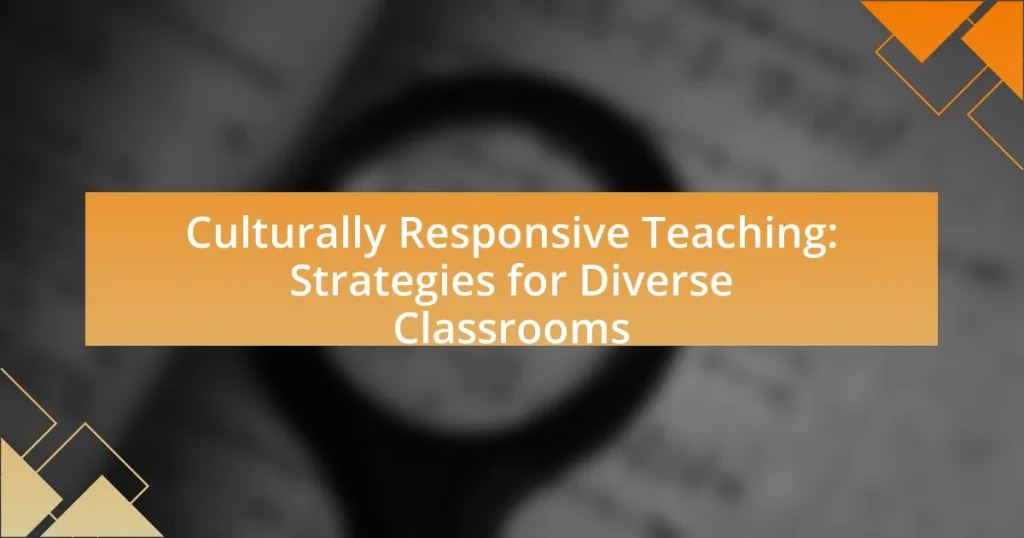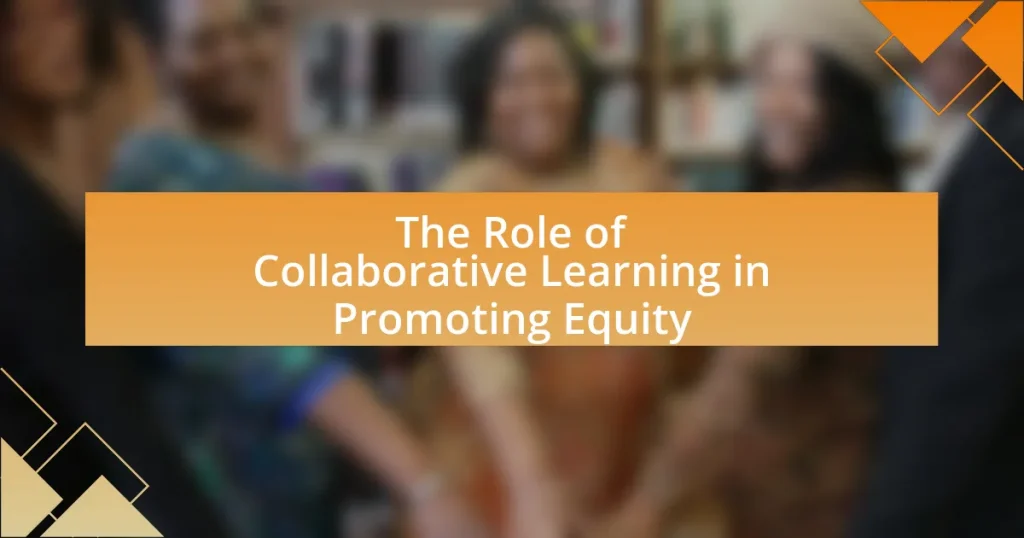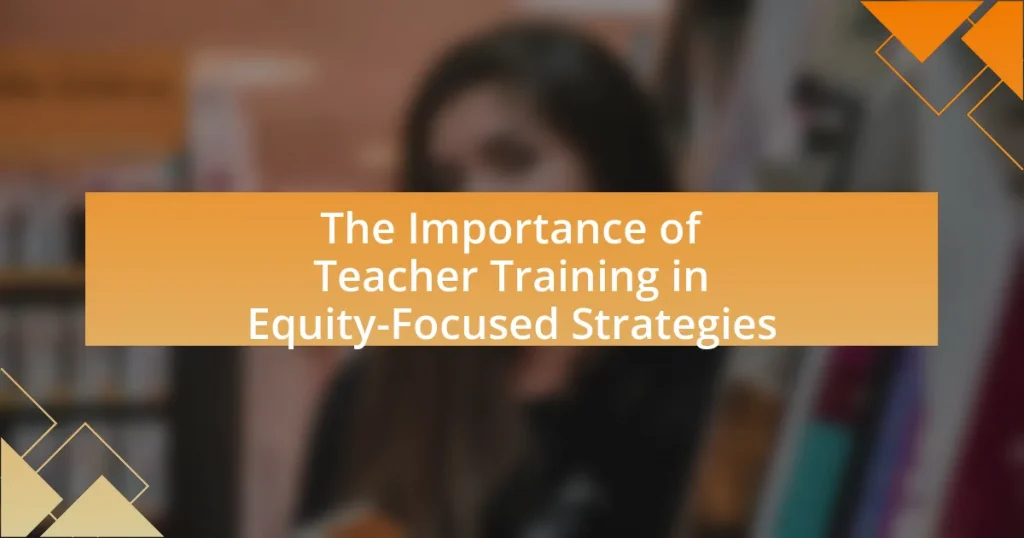Culturally Responsive Teaching (CRT) is an educational approach that integrates students’ cultural backgrounds into the learning process to foster inclusivity and enhance academic success. This article outlines the differences between CRT and traditional teaching methods, emphasizing key principles such as recognizing cultural backgrounds, creating supportive environments, and promoting high expectations. It discusses the importance of understanding students’ cultural contexts, the goals of CRT, and strategies for implementation, including differentiated instruction and culturally relevant assessments. Additionally, the article addresses challenges educators may face in adopting CRT and offers practical tips for effectively engaging diverse learners.

What is Culturally Responsive Teaching?
Culturally Responsive Teaching is an educational approach that recognizes and incorporates students’ cultural backgrounds into the learning process. This method aims to create an inclusive environment that values diversity and promotes academic success by connecting curriculum content to students’ cultural experiences. Research indicates that culturally responsive teaching can enhance student engagement and achievement, particularly among marginalized groups, by fostering a sense of belonging and relevance in the classroom.
How does Culturally Responsive Teaching differ from traditional teaching methods?
Culturally Responsive Teaching (CRT) differs from traditional teaching methods by actively incorporating students’ cultural backgrounds into the learning process. CRT recognizes and values the diverse cultural experiences of students, using these as a foundation for engagement and understanding, whereas traditional methods often adopt a one-size-fits-all approach that may overlook individual cultural contexts. Research indicates that CRT enhances student achievement and engagement by fostering a more inclusive environment, as evidenced by studies showing improved academic performance among culturally diverse students when their cultural identities are acknowledged and integrated into the curriculum.
What are the key principles of Culturally Responsive Teaching?
The key principles of Culturally Responsive Teaching include recognizing the importance of students’ cultural backgrounds, fostering a supportive learning environment, and promoting high expectations for all students. Recognizing cultural backgrounds involves integrating students’ experiences and perspectives into the curriculum, which enhances engagement and relevance. A supportive learning environment is created by building relationships and establishing trust, allowing students to feel safe and valued. Promoting high expectations ensures that all students are challenged and encouraged to achieve their full potential, which is supported by research indicating that culturally responsive practices lead to improved academic outcomes and student motivation.
Why is understanding students’ cultural backgrounds important?
Understanding students’ cultural backgrounds is important because it enhances educational engagement and academic success. When educators recognize and incorporate the diverse cultural experiences of their students, they create a more inclusive learning environment that respects and values individual identities. Research indicates that culturally responsive teaching practices can lead to improved student motivation and achievement, as evidenced by a study published in the “Journal of Educational Psychology,” which found that students who felt their cultural backgrounds were acknowledged performed better academically. This understanding fosters stronger relationships between teachers and students, ultimately contributing to a more effective educational experience.
What are the goals of Culturally Responsive Teaching?
The goals of Culturally Responsive Teaching are to create an inclusive learning environment that acknowledges and values students’ diverse cultural backgrounds, thereby enhancing their academic success and engagement. This approach aims to foster positive relationships between educators and students, promote critical thinking, and empower students by integrating their cultural references into the curriculum. Research indicates that when students see their cultures reflected in their education, they are more likely to participate actively and perform better academically, as highlighted in the work of Geneva Gay in “Culturally Responsive Teaching: Theory, Research, and Practice.”
How does Culturally Responsive Teaching promote equity in the classroom?
Culturally Responsive Teaching promotes equity in the classroom by recognizing and valuing students’ diverse cultural backgrounds, which enhances their engagement and learning outcomes. This teaching approach incorporates students’ cultural references in all aspects of learning, thereby fostering a more inclusive environment. Research indicates that when educators implement culturally relevant pedagogy, students from marginalized backgrounds demonstrate improved academic performance and increased self-esteem, as evidenced by a study published in the “Journal of Educational Psychology” by Gay (2010), which highlights the positive impact of culturally responsive practices on student achievement.
What impact does Culturally Responsive Teaching have on student engagement?
Culturally Responsive Teaching significantly enhances student engagement by making learning more relevant and relatable to diverse student backgrounds. This teaching approach acknowledges and incorporates students’ cultural references in all aspects of learning, which fosters a sense of belonging and motivation. Research indicates that when students see their identities and experiences reflected in the curriculum, their participation and interest in classroom activities increase. For example, a study by Gay (2010) in “Culturally Responsive Teaching: Theory, Research, and Practice” demonstrates that culturally responsive practices lead to higher academic achievement and increased engagement among students from various cultural backgrounds.

What strategies can be implemented in Culturally Responsive Teaching?
Culturally Responsive Teaching can implement strategies such as incorporating students’ cultural references in the curriculum, fostering a supportive classroom environment, and utilizing diverse teaching materials. Incorporating cultural references engages students by making learning relevant to their experiences, which has been shown to improve academic performance and motivation. Creating a supportive environment encourages open dialogue about cultural differences, promoting respect and understanding among students. Utilizing diverse teaching materials, including literature and resources from various cultures, ensures that all students see themselves represented in their education, which can enhance their sense of belonging and engagement in the learning process.
How can teachers incorporate students’ cultural references into the curriculum?
Teachers can incorporate students’ cultural references into the curriculum by integrating culturally relevant materials and examples that reflect the diverse backgrounds of their students. This approach enhances engagement and fosters a sense of belonging among students. For instance, teachers can include literature, historical events, and case studies from various cultures in their lesson plans, ensuring that students see their identities represented in the curriculum. Research indicates that culturally responsive teaching practices improve academic outcomes and student motivation, as evidenced by a study published in the “Journal of Educational Psychology,” which found that students who learned in culturally relevant contexts showed higher levels of engagement and achievement.
What are effective ways to build relationships with diverse students?
Effective ways to build relationships with diverse students include actively listening to their experiences and incorporating their cultural backgrounds into the learning environment. By creating a classroom atmosphere that values and respects diversity, educators can foster trust and engagement. Research shows that culturally responsive teaching practices, such as using culturally relevant materials and encouraging students to share their cultural narratives, enhance student-teacher relationships and improve academic outcomes. For instance, a study by Gay (2010) highlights that when teachers integrate students’ cultural references into their lessons, it leads to increased student participation and a sense of belonging.
How can teachers adapt their teaching styles to meet diverse learning needs?
Teachers can adapt their teaching styles to meet diverse learning needs by employing differentiated instruction, which tailors teaching methods to accommodate various learning preferences and abilities. This approach includes using a variety of instructional strategies, such as visual aids, hands-on activities, and collaborative learning, to engage students with different learning styles. Research indicates that differentiated instruction can lead to improved student outcomes, as it addresses individual strengths and challenges, thereby fostering a more inclusive learning environment. For example, a study by Tomlinson (2001) highlights that when teachers adjust their methods based on student readiness, interests, and learning profiles, they can significantly enhance student engagement and achievement.
What role does assessment play in Culturally Responsive Teaching?
Assessment plays a crucial role in Culturally Responsive Teaching by providing educators with insights into students’ cultural backgrounds, learning styles, and individual needs. This understanding allows teachers to tailor their instructional strategies to be more inclusive and effective. For instance, formative assessments can reveal how students from diverse backgrounds engage with content, enabling educators to adjust their approaches accordingly. Research indicates that culturally responsive assessments, which consider students’ cultural contexts, lead to improved academic outcomes and greater student engagement. This is supported by studies showing that when assessments are aligned with students’ cultural experiences, they perform better and feel more valued in the learning environment.
How can assessments be designed to be culturally relevant?
Assessments can be designed to be culturally relevant by incorporating diverse cultural perspectives and contexts into the assessment content and format. This involves using examples, scenarios, and language that reflect the backgrounds and experiences of all students, ensuring that assessments are not biased towards a single culture. Research indicates that culturally relevant assessments improve student engagement and performance, as they resonate more with students’ lived experiences. For instance, a study by Ladson-Billings (1994) highlights that culturally relevant pedagogy enhances academic success by validating students’ cultural identities.
What are the best practices for providing feedback to diverse learners?
Best practices for providing feedback to diverse learners include using clear, specific, and actionable language tailored to individual needs. This approach ensures that feedback is understandable and relevant, which is crucial for learners from various cultural and linguistic backgrounds. Research indicates that culturally responsive feedback enhances student engagement and learning outcomes by acknowledging and valuing diverse perspectives. For instance, a study by Gay (2010) emphasizes the importance of recognizing cultural differences in communication styles, which can significantly impact how feedback is received and processed. Additionally, providing opportunities for self-assessment and peer feedback fosters a collaborative learning environment, allowing diverse learners to engage with feedback in a meaningful way.

What challenges might educators face in Culturally Responsive Teaching?
Educators may face several challenges in Culturally Responsive Teaching, including a lack of training, resistance from students or parents, and insufficient resources. The lack of training can hinder educators’ ability to effectively implement culturally responsive strategies, as they may not be familiar with diverse cultural backgrounds or teaching methods. Resistance from students or parents can arise when there is a perceived threat to traditional teaching methods or cultural norms, making it difficult for educators to foster an inclusive environment. Additionally, insufficient resources, such as culturally relevant materials or support systems, can limit educators’ capacity to engage all students effectively. These challenges can impede the successful implementation of Culturally Responsive Teaching, which aims to create equitable learning experiences for diverse student populations.
How can teachers overcome biases in their teaching practices?
Teachers can overcome biases in their teaching practices by engaging in self-reflection and professional development focused on cultural competence. Self-reflection allows educators to identify their own biases and understand how these may affect their interactions with students. Professional development programs, such as those offered by the National Education Association, provide training on culturally responsive teaching strategies, which have been shown to improve student engagement and achievement across diverse populations. Research indicates that when teachers implement culturally relevant pedagogy, they create more inclusive learning environments that acknowledge and respect students’ diverse backgrounds, leading to better educational outcomes.
What strategies can be used to address resistance from students or parents?
To address resistance from students or parents, educators can employ strategies such as open communication, building relationships, and involving families in the learning process. Open communication fosters trust and allows educators to understand concerns, while building relationships creates a supportive environment that encourages collaboration. Involving families in decision-making and classroom activities enhances their investment in education, leading to reduced resistance. Research indicates that when parents are engaged, student achievement improves, demonstrating the effectiveness of these strategies in culturally responsive teaching contexts.
How can educators manage their own cultural misunderstandings?
Educators can manage their own cultural misunderstandings by engaging in continuous self-reflection and professional development focused on cultural competence. This involves actively seeking feedback from students and colleagues about cultural interactions and being open to learning from those experiences. Research indicates that educators who participate in training programs that emphasize cultural awareness and sensitivity are better equipped to recognize and address their biases, leading to improved classroom dynamics and student engagement. For instance, a study by Gay (2010) highlights that culturally responsive teaching practices enhance educators’ understanding of diverse student backgrounds, thereby reducing misunderstandings.
What resources are available for teachers to enhance their Culturally Responsive Teaching practices?
Teachers can enhance their Culturally Responsive Teaching practices through various resources, including professional development programs, online courses, and instructional materials. For instance, organizations like the National Education Association provide workshops focused on culturally responsive pedagogy, while platforms such as Coursera and edX offer online courses that cover strategies for engaging diverse learners. Additionally, books like “Culturally Responsive Teaching and The Brain” by Zaretta Hammond provide evidence-based strategies and insights into implementing these practices effectively. Research indicates that culturally responsive teaching can improve student engagement and academic performance, making these resources vital for educators aiming to create inclusive learning environments.
What professional development opportunities exist for educators?
Professional development opportunities for educators include workshops, online courses, conferences, and mentorship programs focused on culturally responsive teaching. These opportunities aim to enhance educators’ skills in addressing the diverse needs of students from various cultural backgrounds. For instance, organizations like the National Education Association offer specific training sessions that equip teachers with strategies to create inclusive classrooms. Additionally, research indicates that ongoing professional development can lead to improved student outcomes, as educators who engage in such training are better prepared to implement effective teaching practices that resonate with all students.
How can teachers collaborate with community organizations to support diverse students?
Teachers can collaborate with community organizations by establishing partnerships that provide resources and support tailored to the needs of diverse students. These collaborations can include joint programs that address cultural awareness, mentorship opportunities, and access to extracurricular activities that reflect the students’ backgrounds. For instance, research shows that schools partnering with local cultural organizations can enhance student engagement and academic performance by integrating culturally relevant materials into the curriculum. Additionally, community organizations can offer workshops for teachers on cultural competency, which equips educators with the skills to better understand and meet the diverse needs of their students.
What are some practical tips for implementing Culturally Responsive Teaching effectively?
To implement Culturally Responsive Teaching effectively, educators should first build strong relationships with students by understanding their cultural backgrounds and experiences. This can be achieved through regular communication, active listening, and creating a welcoming classroom environment that reflects diverse cultures. Additionally, integrating culturally relevant materials and perspectives into the curriculum enhances engagement and relevance for all students. Research indicates that when students see their cultures represented in the classroom, their academic performance improves (Gay, 2010). Furthermore, employing varied teaching strategies that cater to different learning styles and cultural contexts fosters inclusivity and supports diverse learners.



